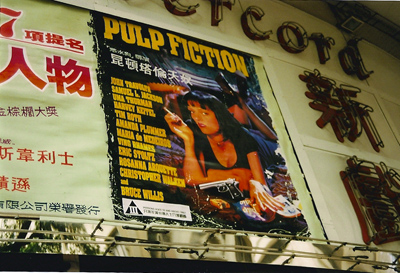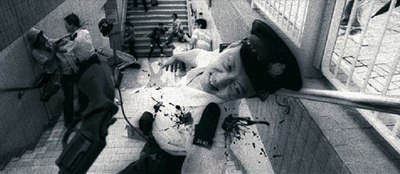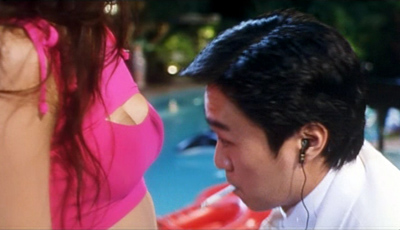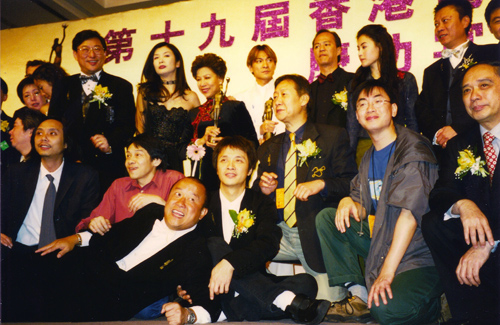 [1]
[1] 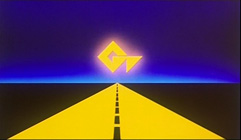 [2]
[2] 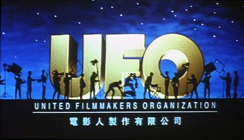 [3]
[3] 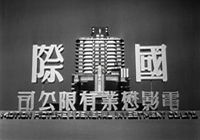 [4]
[4] 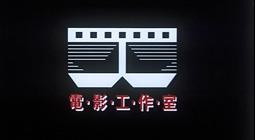 [5]
[5] 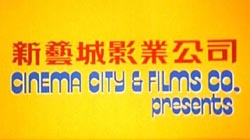 [6]
[6] 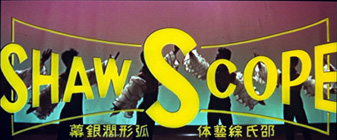 [7]
[7] 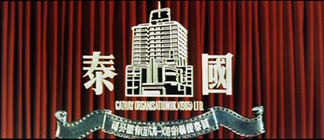 [8]
[8] 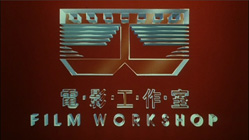 [9]
[9] 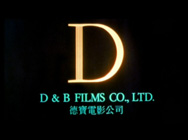 [10]
[10] 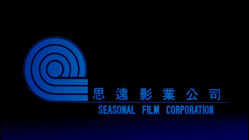 [11]
[11]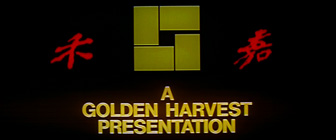 [12]
[12] 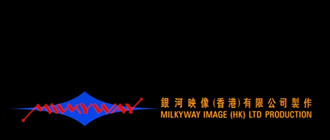 [13]
[13]  [14]
[14]  [15]
[15]
DB here:
Planet Hong Kong, in a second edition, is now available as a pdf file. It can be ordered on this page [16], which gives more information about the new version and reprints the 2000 Preface. I take this opportunity to thank Meg Hamel, who edited and designed the book and put it online.
As a sort of celebration, for a short while I’ll run a daily string of entries about Hong Kong cinema. These go beyond the book in dealing with things I didn’t have a chance to raise in the text. This is the second one. The first, a list of about 25 Hong Kong classics, is here [17]. The third, on principles of HK action cinema, is here [18]. The fourth, a photo portfolio of HK stars, is here [19]. The next installments focus on western HK fandom [20], on director snapshots [21], and on film festivals [22], the last including a list of some personal favorites. Thanks to Kristin for stepping aside and postponing her entry on 3D.
Seldom do historians get to write finis to the tales they tell. Who can tell when a process is played out? Yet sometimes you can’t avoid the sense that things have definitively ended.
That’s the case with Hong Kong cinema. Good, even great, films will still be made there, but that’s true of any territory. What made Hong Kong turn out so much lively cinema for so long was its large, robust film industry. Not exactly the Hollywood of the East, as Planet Hong Kong tries to show; it was erratic and seat-of-the-pants, less a large-scale enterprise than a cottage industry. Yet its scale did help it achieve a unique place in film history. Today there can be little doubt that the glory days of that cottage industry are gone. They started to go, in fact, about fifteen years ago.
Not 1997, 1994
Silvercord Cinema, March 1995.
From the 1960s to the mid-1990s, the Hong Kong film industry ruled the East Asian market. Confronted with a small population in the Crown Colony (still under British control), filmmakers turned toward the much larger regional audience. They succeeded, wildly. In an era when most Asian nations couldn’t afford to import American films, the Hong Kong product boasted higher production values than films from other countries in the region (except Japan, of course). The films catered to the Chinese diaspora, a prosperous segment of most neighboring countries. Moreover, the industry offered major stars: the Shaws and Cathay stables at first, then Bruce Lee, Jackie Chan, Jet Li, and innumerable crossover faces from TV and pop music.
But things changed. Wasn’t the year 1997 the breaking point? After all, that was when the colony was handed over to Mainland China. Actually, PHK argued back in 2000, the slump started in 1993-1994. Thanks to overproduction, the exodus of talent, the rise of video piracy, and many other factors, the industry was in trouble well before the handover. Its problems were exacerbated by the Asian financial crisis of 1997, the 2002-2003 SARS outbreak, Internet piracy, the increasing success of South Korean cinema (and popular culture generally), and a powerful shift of investment and talent to the Mainland.
The new edition of the book gives details, but the dimensions of decline can be summarized.
*In most years between 1977 and 2002, between 100 and 234 films were released annually. (There was a significant drop in the years 1996-1998, an immediate reflection of the waning market.) After 2002, the number dropped steadily to about fifty releases per year. In 2010, Patrick Frater reports [24], there were 54 Hong Kong releases out of a total of 286 theatrical releases.
*Local movie attendance waned accordingly. In 1990, fifty million tickets were sold. In 1995, only 28 million were. Throughout the 1990s, ticket sales wobbled between about 17 million and 22 million. Recently, the number has been about 20 million.
*What proportion of local box-office receipts are claimed by local films? Again, 1994 proves a watershed. Before that, local films won between two-thirds and three-quarters of the market. But from 1995 on, the percentage shrank drastically. By the mid-2000s, Hong Kong productions were claiming less than a quarter of receipts. In 2009, 20.7 % of receipts went to local films—about US$31 million. The rest went to foreign imports, chiefly Hollywood movies.
*Before 1996, each year’s top ten box-office winners included between eight and ten local productions. It’s sad to trace the steep decline; by 2005 through 2008, only two films a year made it into the winner’s circle. In 2009 there was only one local film in the top ten. Last year there were two, and number ten was Gulliver’s Travels; how sad is that? America wins again.
*But Hong Kong’s market was chiefly a regional one. So how did the films do overseas? After 1994, not so well. The multiplexing of the world (one of the most important developments in global cinema history) gave Hollywood a strong entrée to places it had previously ignored. As Asian consumers became wealthier, they were drawn to the well-appointed theatres showing American movies like Jurassic Park (1993) and Speed (1994). Hollywood responded with blockbusters aimed at young and middle-class viewers in all countries, and soon its overseas receipts surpassed those from the United States. American films shoved Hong Kong films off both domestic and regional screens.
*Finally, what about China? Some locals thought that after 1997, Hong Kong would become China’s Hollywood. After all, the Mainland industry was backward, and Hong Kong had the money, the facilities, the skill sets, and the talent—especially stars that were household names in China. Sooner or later the PRC would need Hong Kong. Things did not work out that way, as I’ll discuss below.
The 2000 edition of PHK pointed to some of these factors, but an extra decade yields a longer view, and that lets us fill in more interesting detail. The old historians’ adage holds good: You really do need a stretch of time to see things more clearly. Of course you don’t have to go as far as Zhou Enlai. Asked about the effects of the French revolution, he is said to have replied: “Too soon to tell.”
Not a long time
Fire of Conscience (2010).
Speaking of Zhou, one thing I couldn’t foresee when I was writing PHK in 1997-1999 was the emergence of China as a filmmaking power. The mainland cinema was in pretty bad shape when Kristin and I visited the PRC in 1988, and things got worse in the next decade. For example, the number of cinema screens fell from about 140,000 in 1991 to 65,000 in 2001.
Again, though, things were changing. The PRC steadily stabilized the decline of its industry. It semi-privatized production, distribution, and exhibition. It let in American films and encouraged international investment to build up an infrastructure. The bureaucracy blocked a free flow of Hong Kong films into their market until 2003, at which point local exhibition was on the road to maturity. The audience grew but remained comparatively small: 115 million in 2000, 263 million in 2009. But receipts skyrocketed.
China’s cities were growing fast, and newly-prosperous urbanites turned to the new multiplexes built with Japanese, Korean, and Hong Kong investment. In 2001, box-office revenues were reported as US$77 million–about the same as tiny Denmark the same year. By the end of 2010, according to this Variety article [26], total box office looked to be about $1.5 billion—ahead of the 2009 receipts from the United Kingdom. (The UK is the second-biggest box-office territory in the EU.) The same Variety article quotes the head of China Film Group saying that he expected the figure to exceed $3 billion, which would easily make China the most lucrative market outside the United States.
Clearly China’s growth came at Hong Kong’s expense. A quota kept nearly most Hong Kong films out of China for nearly a decade. Now producers could enter only on the Mainland’s terms, with coproductions and joint ventures the primary options. Producers were eager to partner with what was likely the fastest-growing film market in history. After 2003 more and more Hong Kong films would have some PRC involvement—financing, location shooting, postproduction, technical staff, and of course stars. The Chinese market was so vigorous that producers began assuming they could make their films principally for the Mainland, not for their home audience. Only the most modestly budgeted film, a teen romance or slapstick comedy, could retain some local tang.
Planet Hong Kong traces this process in more detail, outlining some of the chief creative choices facing Hong Kong filmmakers in the 2000s and since. The Mainland is involved in nearly all of them, not just financially but ideologically. A historical action movie like Bodyguards and Assassins (2009) wins favor by focusing on the heroic efforts of a cross-section of Chinese to defend Sun Yat-sen during his stopover in Hong Kong. The academic, patriotic costume picture perfected by Zhang Yimou has been taken up by Peter Chan Ho-sun (The Warlords, 2007) and John Woo (Red Cliff, 2008-2009).
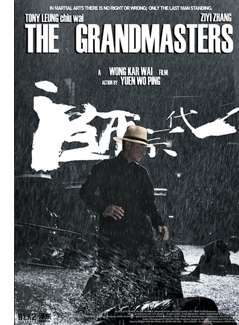 [27]There is another, riskier option: Make films that can sell in the West. This has been Wong Kar-wai’s strategy as he has risen to the top of the festival and arthouse circuit. But after his venture into American indie cinema, My Blueberry Nights (2007), he too has shifted toward the Mainland, reviving the Ip Man project he announced several years ago, now known as The Grandmasters. (Ironically, so great is the power of American distribution that My Blueberry Nights was probably his best-performing film in theatrical release.) Johnnie To Kei-fung has pursued several avenues at once: while making films for Hong Kong, China, and the region he has also developed audiences in festivals and in limited theatrical/ video releases in Europe and the U. S.
[27]There is another, riskier option: Make films that can sell in the West. This has been Wong Kar-wai’s strategy as he has risen to the top of the festival and arthouse circuit. But after his venture into American indie cinema, My Blueberry Nights (2007), he too has shifted toward the Mainland, reviving the Ip Man project he announced several years ago, now known as The Grandmasters. (Ironically, so great is the power of American distribution that My Blueberry Nights was probably his best-performing film in theatrical release.) Johnnie To Kei-fung has pursued several avenues at once: while making films for Hong Kong, China, and the region he has also developed audiences in festivals and in limited theatrical/ video releases in Europe and the U. S.
To the extent that the Hong Kong industry recovers, I’m happy to see it come back. I want it to succeed. Yet to the extent that it is obliged to serve the Mainland market and government policy, I feel a loss. Hong Kong films have become more “professional.” Scripts are getting tighter, and while this leads to strong entries like Hooked on You (2007) and Beast Stalker (2008), the old audacity seems rare. The success of slick, restrained items like Infernal Affairs (2002-2003) and Initial D (2005) may signal that most films will lack the galvanic unpredictability of the old days. CGI has made stunts more outlandish but also less convincing; Jackie Chan’s successors need no longer risk breaking a collarbone. A bravado bit of spfx technique, like the sculptured freeze-frame opening Dante Lam Chiu-yin’s Fire of Conscience (2010), has replaced the sort of open-throttle curtain-raiser that hurled you into the movie’s world.
In the prime days, the scale of production and the heedless rush to make movies to satisfy a market, to surpass your competitor, to make a killing before 1997—all that fostered a frantic, unpredictable churn. Fans found there the audacious conviction of the hell-for-leather outlaw. But entertaining as today’s movies can still be, the edge has blunted. Cellular (2004) became Connected (2008). Both are lively items, but did you ever think you’d see the day that Hong Kong turned out an authorized remake of an American movie? (Warner Bros. coproduced it.) Even English titles have become distressingly tasteful and cogent. Kung Fu vs. Acrobatic (1990), Love Amoeba Style (1997), Killing Me Hardly (1997), and Horrible High Heels (1996): those titles and dozens more teased us toward the sweet brink of nonsense. Divergence and Invisible Target and Wait Till You’re Older just don’t do the job.
Plastic boobs were involved
From Beijing with Love (Stephen Chow/ Lee Lik-chi, 1994).
Yet all signs of life haven’t been muffled. In the current restrictive climate, Johnnie To can make eccentric, occasionally shocking films like Running on Karma (2003) and Throw Down (2004). I take comfort in learning just last weekend what terminated Stephen Chow’s directorship of The Green Hornet. According to one report [29] he proposed to plant a microchip in the hero’s brain and have Kato control him with a joystick. In an Entertainment Weekly article not online, director Michel Gondry claims that Chow’s plans were too far out. “Really, really crazy ideas that you would not dare bring to a studio. AIDS was involved. Plastic boobs were involved too.” That Gondry, one of Hollywood’s approved Wild Things, can find something Chow proposed over the top gives you hope.
A couple of months before the handover, I was in Kowloon talking with a cab driver. He told me confidently, “Chinese people are born capitalists. We know very well how to make money. We will never accept Communism.”
“But,” I said, “the Mainland has had a Communist government for forty years.”
He shrugged. “Forty years is not a long time.”
Now that is really taking the long perspective. Maybe I shouldn’t write finis. The prospects of Hong Kong cinema? Too soon to tell. Ask me in forty years.
Many of the statistics cited here and in Planet Hong Kong come from the Hong Kong Motion Picture Industry Association and from that invaluable source on world film trends, Screen Digest [30]. We discuss the importance of multiplexing in the process of globalizing cinema in Chapter 29 of Film History: An Introduction. For an example of the ideological finger-wagging practiced by China’s officialdom, go here [31]. (Thanks to Shelly Kraicer for the link.) The Michel Gondry quotation comes from Benjamin Svetkey, “Hornet’s Buzz Gets Better,” Entertainment Weekly (14 January 2011), p. 25.
PS 24 January: Soon after this entry was published, Luo Jin wrote me with some comments. I’m sorry about the delay in posting them, but I wanted to recheck my sources and dig up new ones.
I just read your latest blog entry. Some numbers are different from my knowledge, so I provide them below. I hope they are helpful.
“The number of cinema screens fell from about 140,000 in 1991 to 65,000 in 2001.”
In general the screen number in China refers to the screens in large and medium-sized cities, excluding small cities and rural areas. That is because in most small cities or counties (like Jia Zhangke’s hometown Fenyang), there is no film theater at all. And in the rural areas, only mobile screens are available. Tickets are free, so there are no B.O. receipts. In all, an accurate number of screens is hard to count. I checked the official report, and the number of cinema screens in 2002 is given as 1,581, increasing annually to 6,223 in 2010. If I am not wrong, the number in the United States is around 40,000, so it couldn’t be that much in 1991 to 2001 in China, even taking the rural mobile screens into consideration. Reportedly the rural mobile screens numbered about 40,000 in 2010.
“In 2001, box-office revenues were reported as US$77 million”
In the official report, the domestic B.O. revenue in 2001 is 890 millions RMB, equal to US$108 million by 2001 exchange rate.
My sources for Chinese exhibition statistics, as indicated above, were the annual reports in Screen Digest, which I have always found reliable in relation to other countries. I assume that the SD sources counted the rural mobile screens in the total, but otherwise I don’t know how to explain the discrepancy. Similarly, the differences in reported box office revenue may need to be checked against indigenous sources. The most recent Screen Digest annual exhibition report (November 2010) cites for 2009 34,233 screens in China (again suggesting that mobile screens are counted) and a box-office take of 6109 billion yuan, or US$906 million. The latter figure corresponds to other reports [32] in Western sources. On screen counts, other sources suggest numbers closer to Jin’s. A 2008 Variety article [33] mentioned that there were currently only 3000 screens in the country, while a mid-2010 Variety piece [33] claims 5000 by 2009. If my claims prove unfounded on these points, I regret the errors.
Hong Kong Film Award winners, 2000. Among them, top row, from left: Ng See-yuen (with orchid), Carrie Ng Ka-lai, Law Lan, Andy Lau Tak-wah (white suit), Ti Lung, Cecelia Cheung Pak-chi, and Arthur Wong Ngok-tai. Bottom row: Manfred Wong Man-chun (in profile), Gordon Chan Ka-seung, Teddy Robin Kwan, Eric Tsang Chi-wai, Tung Wai, Cheung Tung Cho, Lam Kee-to (in spectacles). Thanks to Athena Tsui and Luo Jin for help in identification.
